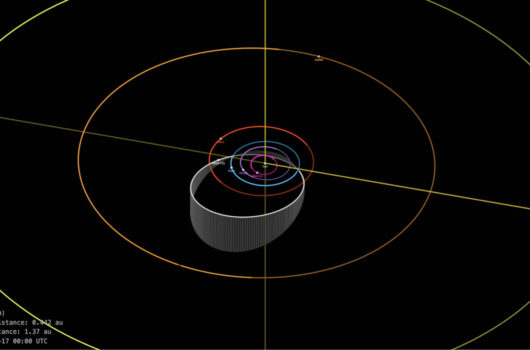Inference of bipolar neutrino flavor oscillations near a core-collapse supernova, based on multiple measurements at Earth
Inference of bipolar neutrino flavor oscillations near a core-collapse supernova, based on multiple measurements at Earth
View
Abstract
Neutrinos in compact-object environments, such as core-collapse supernovae, can experience various kinds of collective effects in flavor space, engendered by neutrino-neutrino interactions. These include “bipolar” collective oscillations, which are exhibited by neutrino ensembles where different flavors dominate at different energies. Considering the importance of neutrinos in the dynamics and nucleosynthesis in these environments, it is desirable to ascertain whether an Earth-based detection could contain signatures of bipolar oscillations that occurred within a supernova envelope. To that end, we continue examining a cost-function formulation of statistical data assimilation (SDA) to infer solutions to a small-scale model of neutrino flavor transformation. SDA is an inference paradigm designed to optimize a model with sparse data. Our model consists of two mono-energetic neutrino beams with different energies emanating from a source and coherently interacting with each other and with a matter background, with time-varying interaction strengths. We attempt to infer flavor transformation histories of these beams using simulated measurements of the flavor content at locations in vacuum (that is, far from the source), which could in principle correspond to earth-based detectors. Within the scope of this small-scale model, we found that: (i) based on such measurements, the SDA procedure is able to infer \textit{whether} bipolar oscillations had occurred within the protoneutron star envelope, and (ii) if the measurements are able to sample the full amplitude of the neutrino oscillations in vacuum, then the amplitude of the prior bipolar oscillations is also well predicted. This result intimates that the inference paradigm can well complement numerical integration codes, via its ability to infer flavor evolution at physically inaccessible locations.




